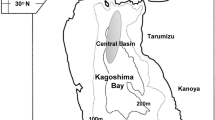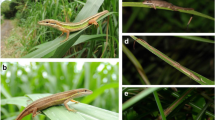Abstract
The growth rates of the morphologically similar scyllarid lobsters Ibacus peronii (Leach, 1815) and I. chacei (Brown and Holthuis, 1998) are described using data from a tag/recapture study and from tagged lobsters kept in captivity. Within particular size classes, we found no differences in moult increments between male and female I. peronii nor between male and female I. chacei. Small individuals of both species always had larger moult increments than larger individuals. For I. peronii, females moulted more frequently than males, and smaller size classes moulted more frequently than larger size classes. Female I. peronii therefore grew more quickly than males and reached their estimated size at sexual maturity (51 mm carapace length) after ∼2 yr. Moulting of I. peronii was seasonal, with most lobsters (96.3%) moulting between October and January. We found no differences in growth rates of I. peronii at two locations along the east coast of Australia: Coffs Harbour in New South Wales (30°18′S; 153°08′E), and Lakes Entrance in Victoria (37°53′S; 148°00′E). For I. chacei, we found no differences in the frequency of moulting between males and females and, because we also found no differences in the moult increments between males and females, the growth rates of both sexes were the same.
Similar content being viewed by others
Author information
Authors and Affiliations
Additional information
Received: 14 August 1999 / Accepted: 20 January 2000
Rights and permissions
About this article
Cite this article
Stewart, J., Kennelly, S. Growth of the scyllarid lobsters Ibacus peronii and I. chacei . Marine Biology 136, 921–930 (2000). https://doi.org/10.1007/s002270000272
Issue Date:
DOI: https://doi.org/10.1007/s002270000272




